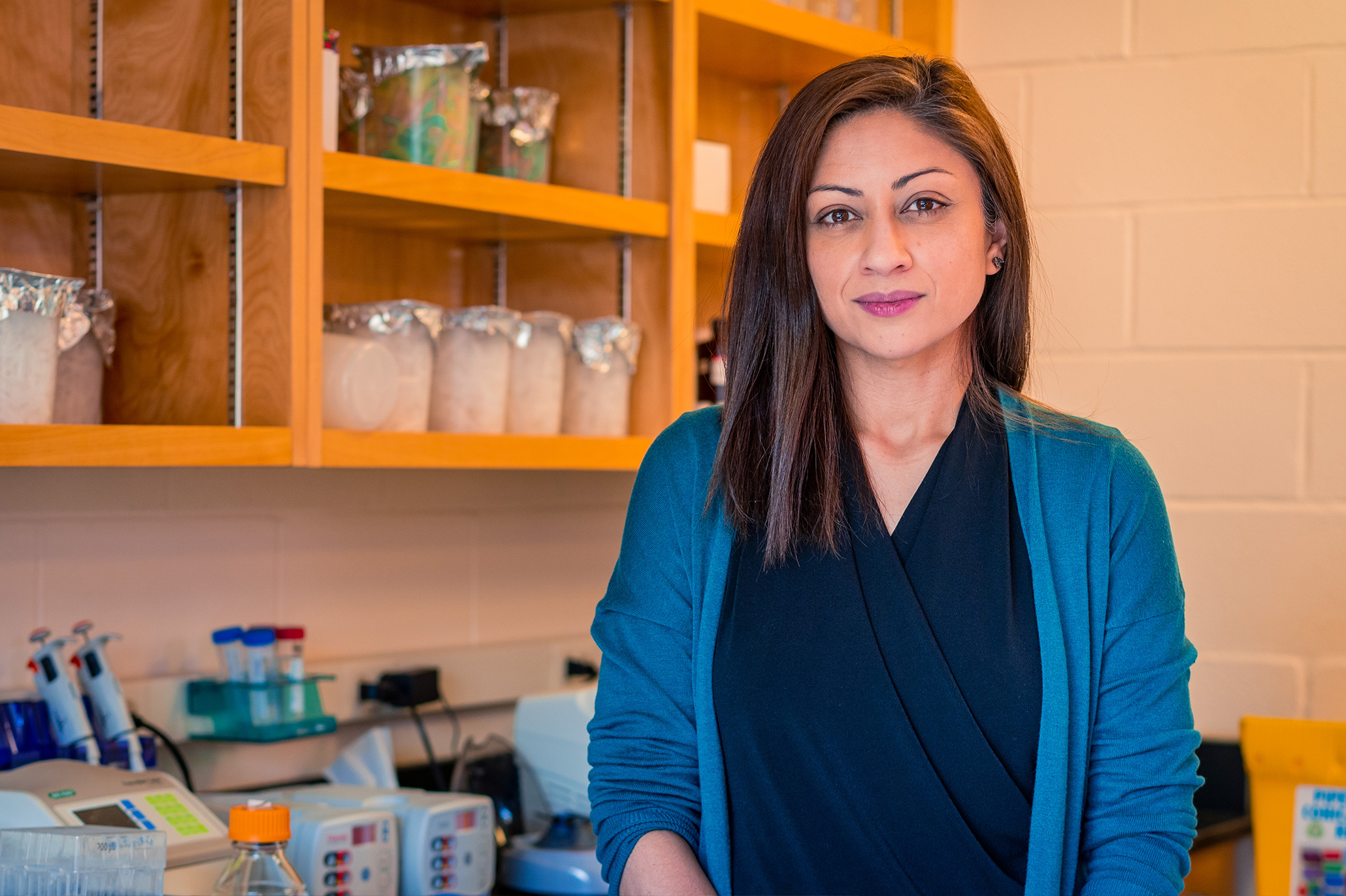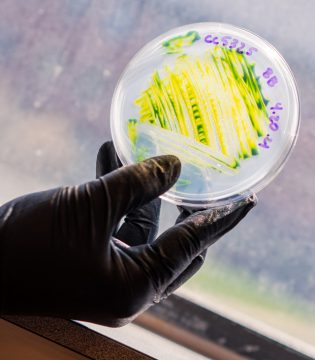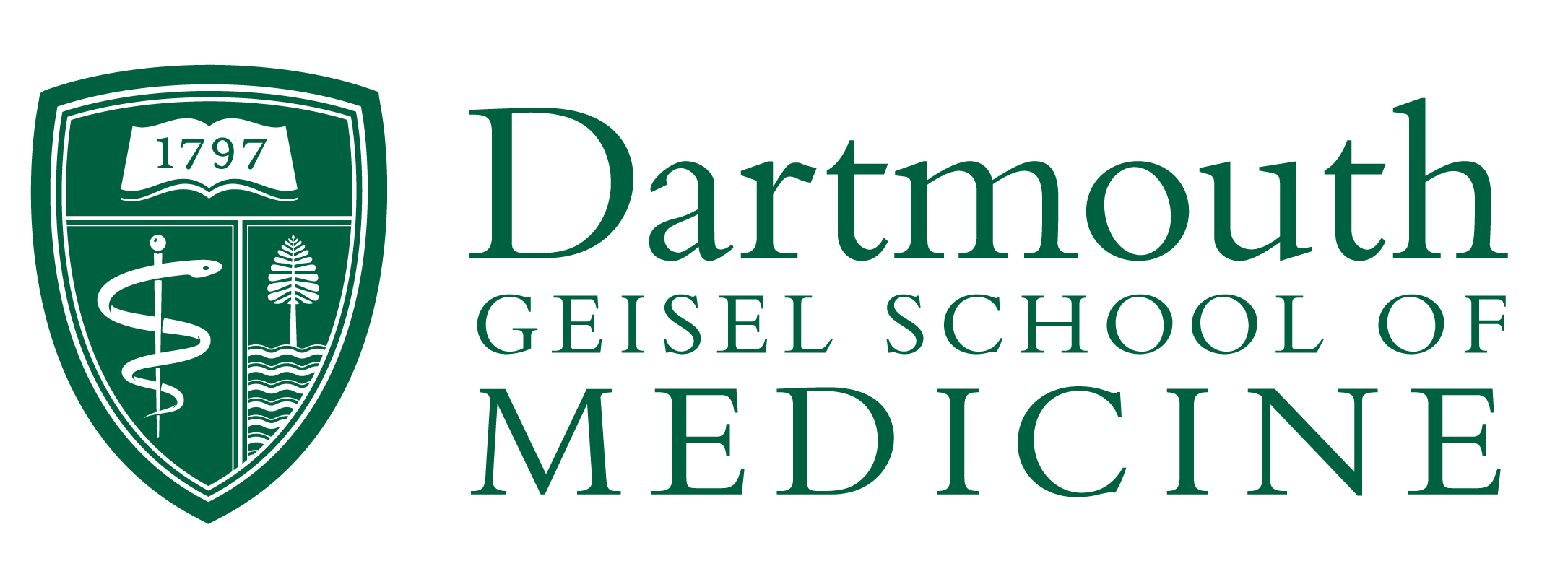
To those not well-versed in basic science research, studying visual neurons in mice and the cellular makeup of green algae might seem like distinctly different pursuits.
Not so, says Prachee Avasthi, PhD, an associate professor of biochemistry and cell biology at Dartmouth’s Geisel School of Medicine. “When you think about it from the scientific perspective of trying to understand how cells and cell structures work, it makes perfect sense,” she explains. “The sensory structure of cells, called the cilium, is exactly the same—in mice, humans, and green algae. And understanding its function can provide valuable insights into human diseases.”
Avasthi fell in love with basic science research as a college student, working in a number of laboratories while attending the University of Illinois at Urbana-Champaign. While there, she earned a Bachelor of Science in molecular and integrative physiology, developing a strong interest in neuroscience. Avasthi went on to complete a PhD in that area of study at the University of Utah—focusing on retinal cells and the visual system in mice.
But when it came time to choose an area of focus for her post-doctoral research, she was eager to find a more “powerful” model system, one that would give her added flexibility and allow her to accelerate her work in genetics and the different kinds of analyses that she wanted to do.
 “I learned that many of the fundamental discoveries in our field had been made in Chlamydomonas (green algae), and that it has some key experimental advantages over other models,” says Avasthi. “For example, it grows at room temperature and divides over the course of just six to eight hours, and you can easily isolate the cilia we study away from the rest of the cell—something that’s hard to do in almost every other cell type.”
“I learned that many of the fundamental discoveries in our field had been made in Chlamydomonas (green algae), and that it has some key experimental advantages over other models,” says Avasthi. “For example, it grows at room temperature and divides over the course of just six to eight hours, and you can easily isolate the cilia we study away from the rest of the cell—something that’s hard to do in almost every other cell type.”
After completing her post-doc fellowship in biochemistry and biophysics at the University of California San Francisco, Avasthi established a highly successful research program at the University of Kansas Medical Center—where she served as an assistant professor of anatomy and cell biology and of ophthalmology for five years—before joining Geisel last summer.
Today, the Avasthi Lab is a recognized leader in uncovering how complex cytoskeletal components are built and regulated within cells—using tools such as chemical inhibitors, biochemistry, genetics, and cell microscopy to better understand how cilia are formed and grow.
Avasthi’s willingness to take an unconventional path, in investigating the role of two fundamental components in cilia assembly—microtubules and actin—has allowed her and her colleagues to make some key contributions to her field.
“Usually, people study one or the other,” she explains. “Focusing our work at the intersection of both has helped attract greater interest from others in this under-explored area of cell biology. And it’s allowing us to make some big leaps in our research. Recently, we’ve uncovered a totally new mechanism showing how actin regulates ciliary assembly—through the storage and trafficking of proteins—a process that has been poorly understood in the past.”
While Avasthi has garnered some well-deserved recognition for her efforts as an early career investigator, including the 2020 Women in Cell Biology Junior Award for Excellence in Research from the American Society for Cell Biology, she’s quick to credit her team. “It’s really the hard work of all of our lab members, and their willingness to try new things and to go where the science takes us, that are the keys to our success,” she says.
Avasthi is as passionate about science advocacy as she is cell biology, pushing for reforms such as more open and rapid scientific communication. To this end, she serves on the boards of directors for ASAPbio and eLife, founded New PI Slack, an online peer-mentoring community for junior faculty, and is on the steering committee of Rescuing Biomedical Research.
“What I love most about being a scientist is being able to pursue what we find most exciting, using the approaches we’re most interested in,” she says. “And we get to choose our colleagues and collaborators—the people we want to spend our days working with, who invigorate us and electrify our thinking. At a place like Dartmouth, that’s pretty special.”




